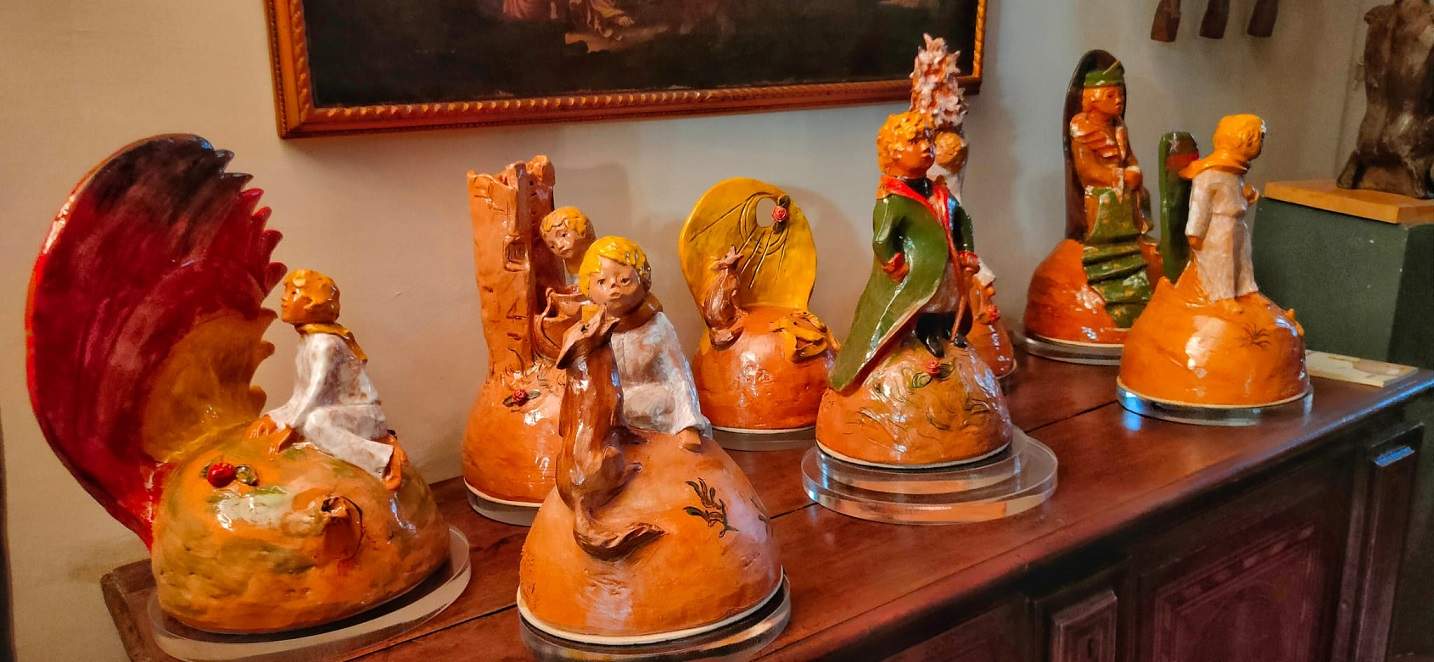TheLittle Prince, the masterpiece book by Antoine de Saint-Exupéry (Lyon, 1900 - Mediterranean Sea, 1944), written in 1942 and published in New York on April 6, 1943, is 80 years old this year. There are many celebrations planned around the world to mark the occasion: The Little Prince after all is one of the best-selling books on the planet, translated into more than two hundred languages. Paris remembers him with an exhibition at the Musée des Arts Decoratifs that opened this week. And, in Italy, Ferrara pays homage to the genius of the aviator and writer with the works of 87-year-old artist Mirella Guidetti Giacomelli, who has dedicated a sculptural cycle of eight finely wrought ceramics to the Little Prince and his fascinating tale, on display in her house-museum on Via XX Settembre.
The initial inspiration came to the author during the lockdown: “It is no accident that the Little Prince revealed himself during those particularly difficult moments,” says the author. “This book out of all time, in fact, reveals to us how the invisible in our being is revealed in loneliness, and also in the forced solitude that that period imposed on us. It is in these moments, in particular, that the heart speaks to us and lets us know ourselves deep inside, without vanity and frills. Life is simplified and allows us to read our selves in their truest intimacy, perhaps making us love simple things more, charity and friendship, whose value is extraordinarily recounted by Saint-Exupéry.”
The eight ceramics made by Guidetti Giacomelli retrace the narrative trace of the text: the little prince with his ever-present rose, in military uniform, “bold and open to life,” the aviator’s fall in the desert, the appearance to the young protagonist of the snake, hidden in the sand. And then: the conversation with the fox, also a sign of cunning, the discovery of other worlds, beyond the earthly one, the encounter, from planet to planet, with characters who, on the way of Saint-Exupéry’s dream, represent in some way the vices of man. At the end a dramatic message, but also one of hope: the return to the desert and the fatal encounter with the snake, but also the prospect of a new world, represented in the artist’s sculptures by a gap in the sun, a symbol of another possible reality.
“I’ve tried to give as much expression as possible to these figures, I hope they can convey what I’ve felt and capture the feelings that have animated me,” says the artist. “There was the work of about a year, I made the first drawings, then the sketches, the first sculpture in clay, the triple firing and the bath in crystalline, which gives a particular luster to the surface: an element that I strongly wanted because it imparts dynamism and vitality to these figures, which I wanted to bring out.”
“This cycle of sculptures,” Guidetti Giacomelli concludes, “was born from the rediscovery of the book. Initially I had received it as a fairy tale. By analyzing and rereading it, a world opened up to me and it enriched me so much on a human level during a difficult period. I will not hide that I was moved. This book is a response to certain hypocrisy in the world; it reveals to us an existence that is beyond. The Little Prince should be read over and over again, every sentence has within it a most important philosophy of life.”
Pictured are sculptures by Mirella Guidetti Giacomelli.
 |
| Ferrara, the sculptures dedicated to the Little Prince by Mirella Guidetti Giacomelli |
Warning: the translation into English of the original Italian article was created using automatic tools. We undertake to review all articles, but we do not guarantee the total absence of inaccuracies in the translation due to the program. You can find the original by clicking on the ITA button. If you find any mistake,please contact us.